Where To Download Text Bibles In Different Languages
Photos: Subconscious Text Discovered in England's Oldest Bible
Biblical history
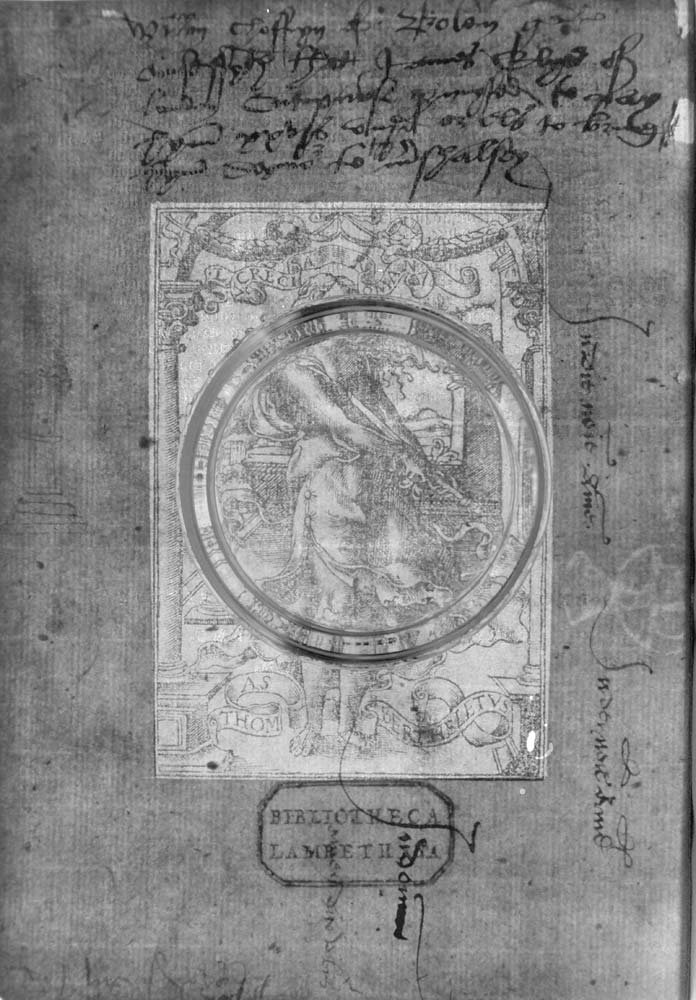
Hidden text has been discovered below ane of the oldest printed Bibles in England, one of only seven copies that survives from 1535. Though the Bible is in Latin, the writing is copied from the start authorized English version of the book, providing a hint of how people fabricated the transition from the Roman Cosmic Church building to Protestantism. [Read more than almost the hidden text in the 1535 Bible]
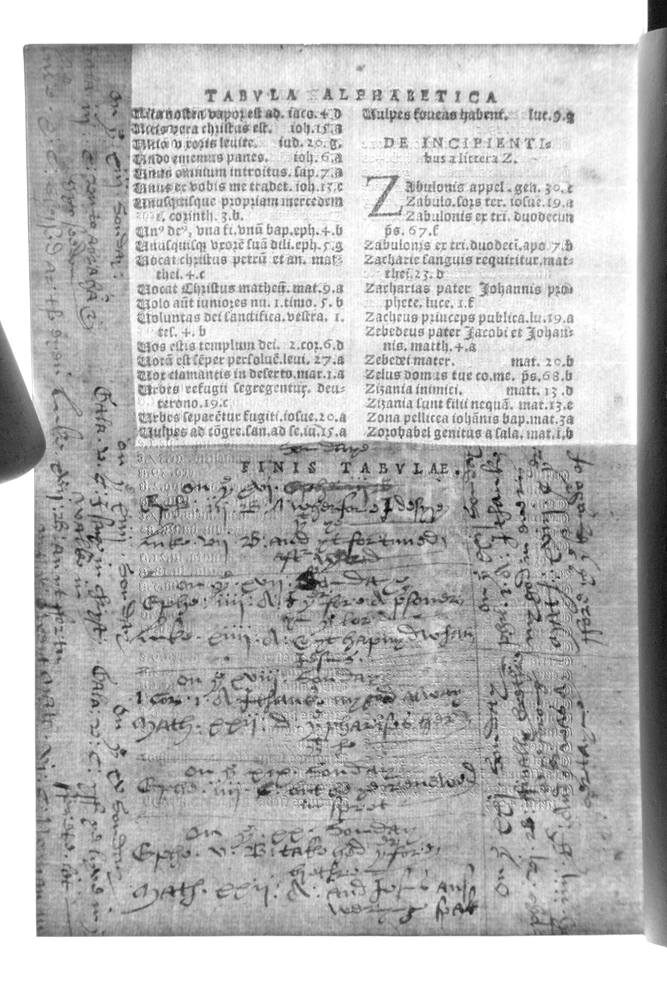
A chance discovery has revealed annotations hidden inside 1 of the first printed Bibles in England. This handwriting has been covered with paste and newspaper for more than 400 years. The writing — in English in a Latin Bible — reveals the messy process of the Protestant Reformation in the Henry VIII era.
Latin and English
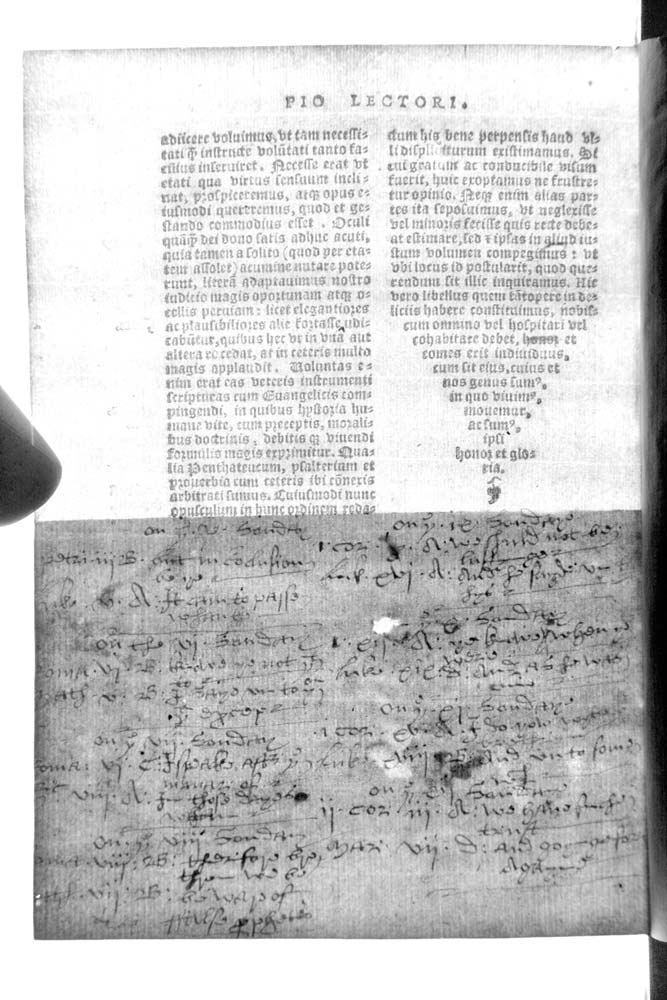
Printed in 1535 and now held by the Lambeth Palace Library, this Bible was among the outset run of printed Bibles in England. Information technology was in Latin, at a time when the Church was splintering in role over whether the scripture should be read in English. By 1539, King Henry VIII would require that the liturgy be performed in English, and the first authorized English-linguistic communication Bible would exist published in England.

These handwritten notes were jotted in English language alongside the Latin text. Eyal Poleg, a historian at Queen Mary Academy of London, constitute the notes past blow when he ordered the wrong Bible from a librarian at the Lambeth Palace Library. While waiting for the correct volume, he noticed a pocket-sized hole in the paper of one of the seemingly blank margins of the volume. Handwritten letters were peaking out.
Garbled text

Poleg used a light box, a sparse, paper-sized lamp, to backlight the pages, which made the annotations visible. Watermarks on the paper revealed that the pasting-over occurred in almost 1600. Simply because the text on the backside of the pages was also illuminated, it was impossible to read the annotations.
History lurking
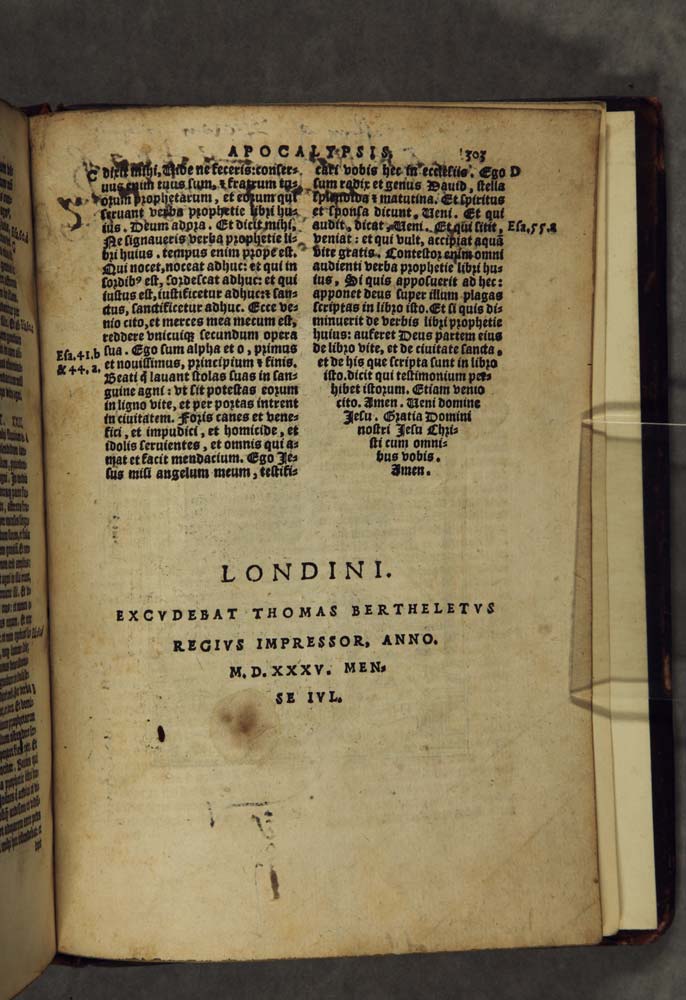
A normal-light view of the same page shows how well-hidden the marginalia of the 1535 Bible was. The encompass-up was very well-done, Poleg said. It was either done by a bookseller or, most likely, by a Lambeth librarian when the book entered the collections around 1600.
First glance
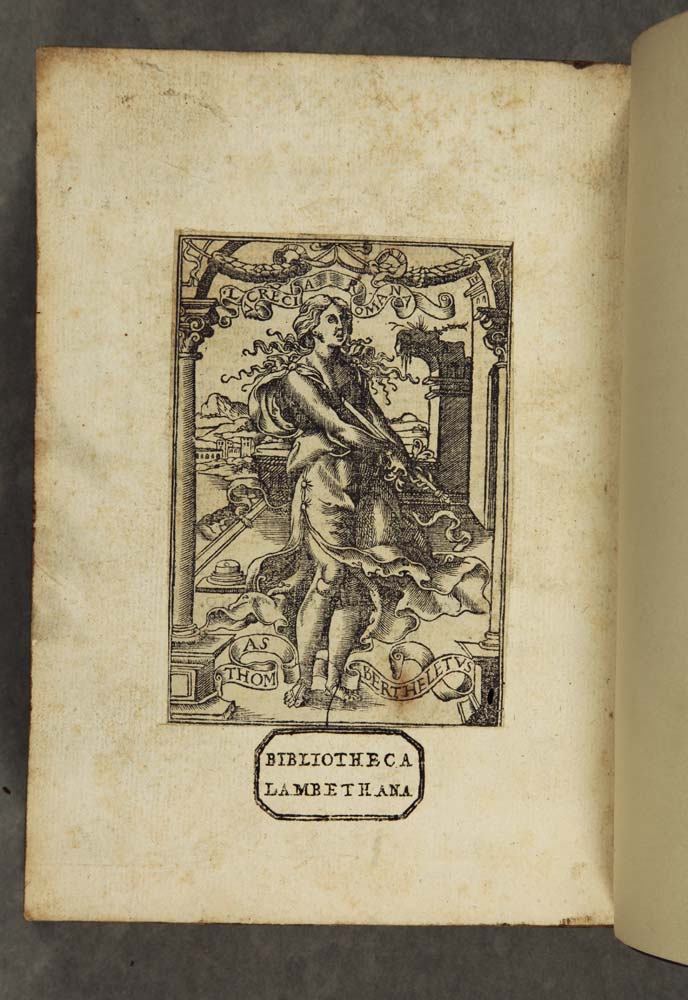
An illustration in the 1535 Latin Bible, which looks to be a pristine, unmarked re-create. Pristine and unmarked books are a thwarting for historians, who employ marginal notes to learn how texts were used.
Book by its embrace
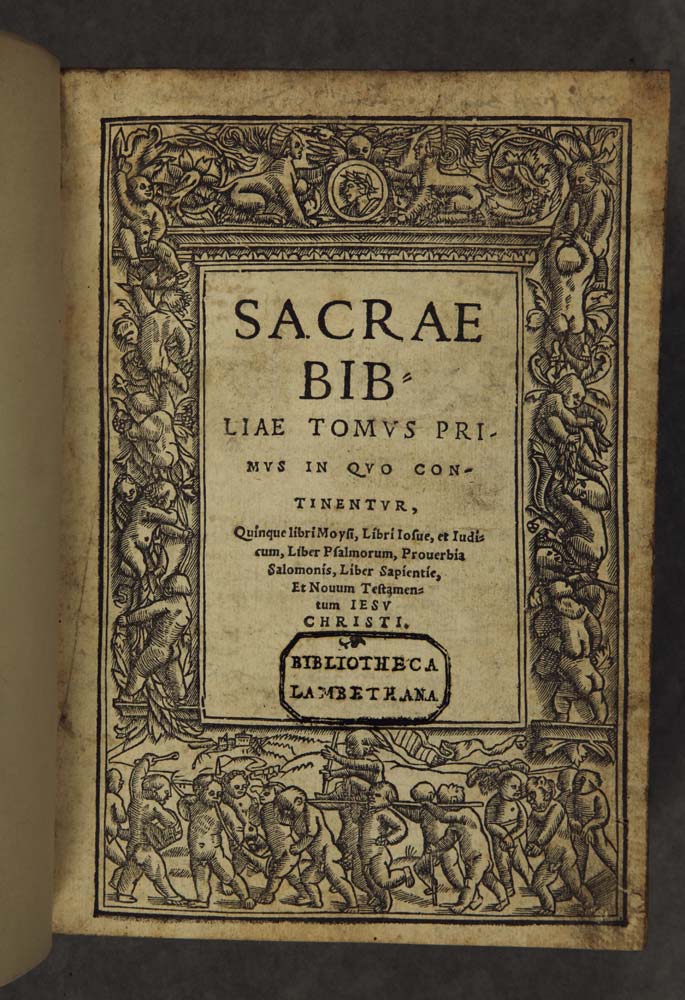
The Latin title folio of the 1535 Bible. The next year, scholar William Tyndale would be executed by strangulation for translating much of the Bible directly from Greek and Hebrew into English language. But merely a few years after that, King Henry VIII would support the English Bible, and his secretary Thomas Cromwell would committee one that would be printed in 1539. The annotations in the 1535 Bible are copies of the tables of lessons (a sort of liturgical schedule) from this authorized English language Bible.
Make a annotation
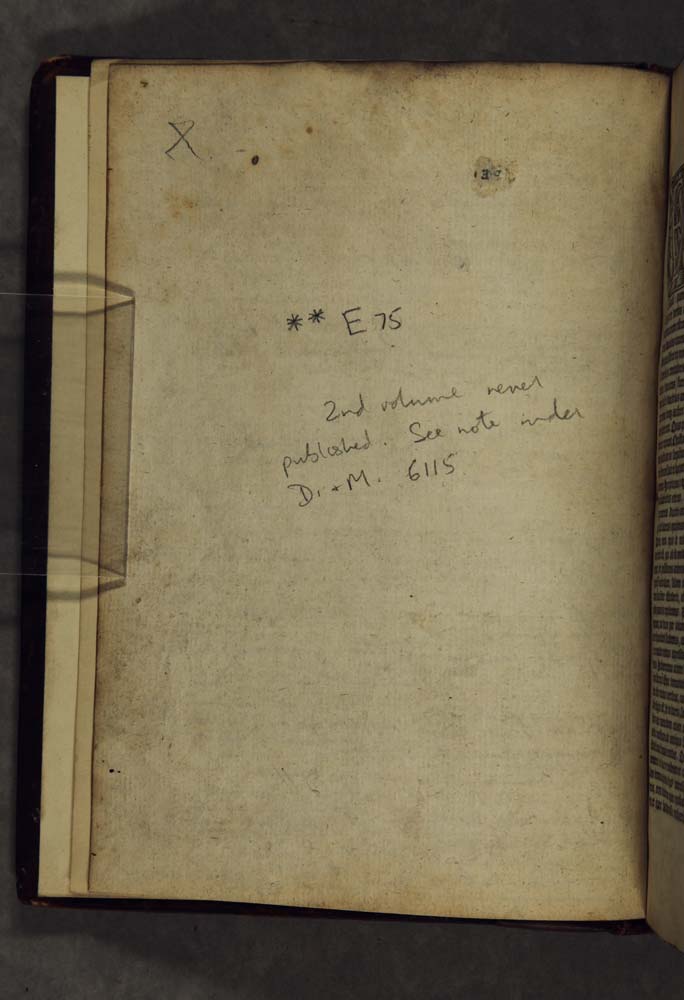
Later librarians missed the English language annotations, which had been expertly covered with heavy paper. Some even wrote their ain notes on cataloguing on top of the covered-up history.
Latin scripture
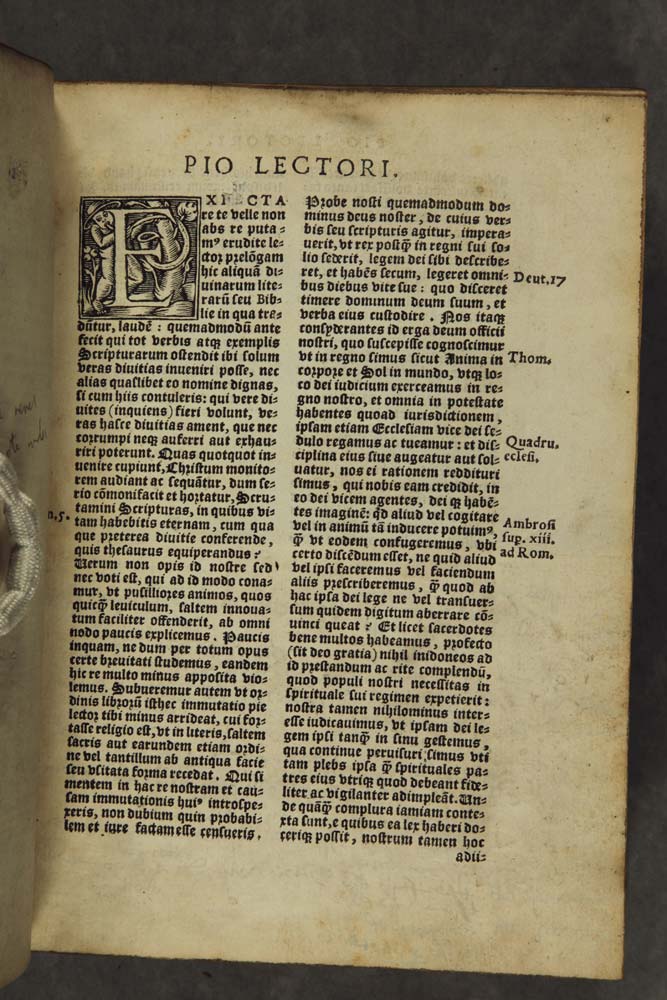
The seemingly unmarked Latin of a page of the 1535 Bible.
Covered writing
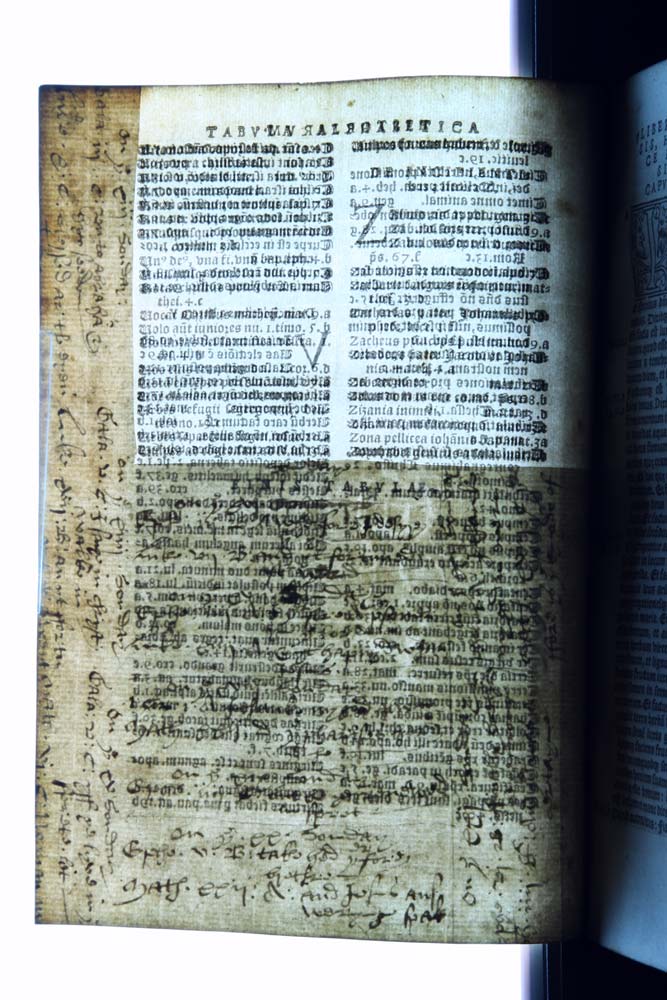
Graham Davis, an 10-ray specialist at Queen Mary University of London's School of Dentistry, wrote software to "decrease" the printed text from images of the Latin Bible, leaving behind only the annotations. The method made it possible to read the handwriting for the start time in more than 400 years.
Where To Download Text Bibles In Different Languages,
Source: https://www.livescience.com/54136-photos-hidden-text-england-oldest-bible.html
Posted by: youngtoomen.blogspot.com


0 Response to "Where To Download Text Bibles In Different Languages"
Post a Comment